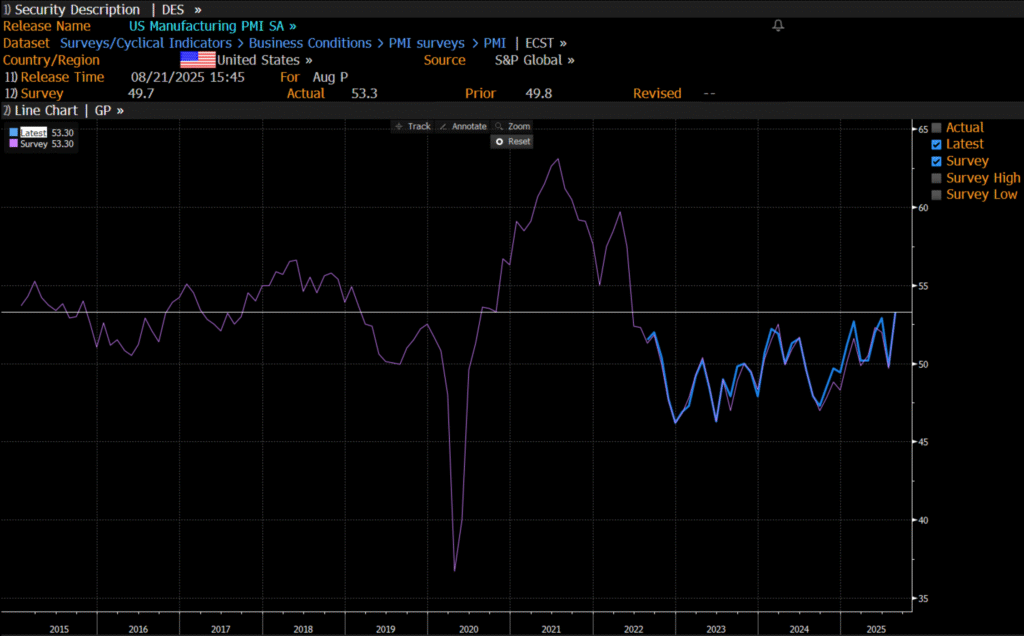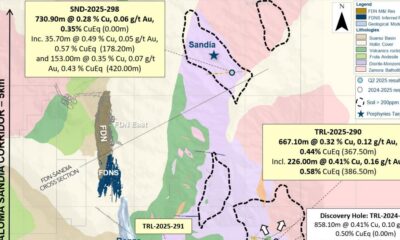Analys
More downside short term – Turn to bullish in mid-November

 Brent crude shed 4.2% yesterday closing at $76.44/bl. It has traded slightly to the upside this morning but more downside seems likely in the short term. Bloomberg consensus is that US crude stocks fell 3.7 million barrels last week with EIA data due today at 16:30 CET. Member data from US API last night however indicated a 9.9 million barrel increase in US crude stocks last week. Over the past three week U.S. crude stocks increased by an average of 7 million barrels per week. Inventories do normally increase at this time of year but only by some 3 million barrels per week as refineries turn around their machines for winter operations. One key reason for the strong increase in U.S. crude stocks currently is the fact that export pipelines are full while domestic production continues to increase. It is thus good reason to expect that U.S. crude stocks continued to increase some 4 million barrels above the seasonal norm. I.e. we should expect data today at 16:30 CET to show a crude stock build of around 7 million barrels last week. This will likely push both the WTI price and the Brent crude oil price further down today.
Brent crude shed 4.2% yesterday closing at $76.44/bl. It has traded slightly to the upside this morning but more downside seems likely in the short term. Bloomberg consensus is that US crude stocks fell 3.7 million barrels last week with EIA data due today at 16:30 CET. Member data from US API last night however indicated a 9.9 million barrel increase in US crude stocks last week. Over the past three week U.S. crude stocks increased by an average of 7 million barrels per week. Inventories do normally increase at this time of year but only by some 3 million barrels per week as refineries turn around their machines for winter operations. One key reason for the strong increase in U.S. crude stocks currently is the fact that export pipelines are full while domestic production continues to increase. It is thus good reason to expect that U.S. crude stocks continued to increase some 4 million barrels above the seasonal norm. I.e. we should expect data today at 16:30 CET to show a crude stock build of around 7 million barrels last week. This will likely push both the WTI price and the Brent crude oil price further down today.
The bearish crude oil price action yesterday was clearly impacted by bearish equity markets, falling 10 year interest rates, rising gold prices and a clear risk-off sentiment. The bearish oil market sentiment was in addition impacted by bearish oil talk by the Saudi Arabian energy minister Khalid Al-Falih who highlighted how Saudi Arabia could increase production both to 11 m bl/d and to 12 m bl/d if needed. The phrasing hade a very clear bearish touch to it in our view.
Mohammed bin Salman (MbS) is in a tough situation at the moment though not at all as tough a situation as Jamal Khashoggi who is actually dead. Since he came to power in 2017 he has consolidated his power, eliminated his rivals and side stepped government institutions and channelled all control into his own hands. MbS has taken very active, direct charge since he came to power (2017). There is no evidence yet tying MbS directly to the liquidation of Jamal Khashoggi though there are probably few who doubt that he was explicitly behind the matter.
MbS is today the ruling prince in Saudi Arabia but he is still not actually the king. He is not either really guaranteed to become the next king. The current ruling king in Saudi Arabia, the 82 year old King Salman bin Abdulaziz Al Saud can still appoint another prince to follow in his footsteps.
As such the communication from the Turkish pm Erdogan is interesting. In yesterday’s media message he did not mention the ruling prince MbS by a word but he praised the ruling king in Saudi Arabia and emphasized that the people behind the killing of Jamal Khashoggi must be taken to court and punished. To us this reads like trying to get MbS out of the way.
MbS today needs his remaining supporters more than ever. His future as king is probably at stake. As such we believe that he now listens much more carefully to Donald Trump’s call for more oil and a lower oil price in the run-up to the US mid-term election on November 6. It is in this context that we interpret Khalid Al-Falih’ bearish oil statement yesterday.
For the time being and the next 2-3 weeks during US refinery turnarounds we’ll have rising US crude stocks. We are also likely to get a further strengthening in the USD (normally strong seasonal dollar gains in November) which likely will hurt emerging market equities and currencies which again is negative for commodities in general. In addition we are also likely to get further bearish verbal intervention Khalid Al-Falih.
We expect most of this to turn to bullish again around mid-November. Donald Trump really wants a fairly high oil price since it creates both US oil independence and a lot of jobs. So after November 6 we are unlikely to hear any more bearish oil talk from him. MbS now also needs a higher oil price more than ever given the loss of friends, supporters as well as backing from international finance so bearish Saudi oil talk should also be a thing of the past. Normally US crude stocks should start to decline again in November though uncertain due to the full export pipelines. In addition the Iran sanctions will likely start to materialize in the form of declining oil inventories some time in November as US sanctions towards Iran fully kicks in on November 4. In general the Brent crude oil market looks tight spot wise but a bearish WTI currently helps to drive all oil benchmarks lower. But contango and rising crude stocks is really primarily in the US.
Analys
OPEC+ in a process of retaking market share

Oil prices are likely to fall for a fourth straight year as OPEC+ unwinds cuts and retakes market share. We expect Brent crude to average USD 55/b in Q4/25 before OPEC+ steps in to stabilise the market into 2026. Surplus, stock building, oil prices are under pressure with OPEC+ calling the shots as to how rough it wants to play it. We see natural gas prices following parity with oil (except for seasonality) until LNG surplus arrives in late 2026/early 2027.

Oil market: Q4/25 and 2026 will be all about how OPEC+ chooses to play it
OPEC+ is in a process of unwinding voluntary cuts by a sub-group of the members and taking back market share. But the process looks set to be different from 2014-16, as the group doesn’t look likely to blindly lift production to take back market share. The group has stated very explicitly that it can just as well cut production as increase it ahead. While the oil price is unlikely to drop as violently and lasting as in 2014-16, it will likely fall further before the group steps in with fresh cuts to stabilise the price. We expect Brent to fall to USD 55/b in Q4/25 before the group steps in with fresh cuts at the end of the year.

Natural gas market: Winter risk ahead, yet LNG balance to loosen from 2026
The global gas market entered 2025 in a fragile state of balance. European reliance on LNG remains high, with Russian pipeline flows limited to Turkey and Russian LNG constrained by sanctions. Planned NCS maintenance in late summer could trim exports by up to 1.3 TWh/day, pressuring EU storage ahead of winter. Meanwhile, NE Asia accounts for more than 50% of global LNG demand, with China alone nearing a 20% share (~80 mt in 2024). US shale gas production has likely peaked after reaching 104.8 bcf/d, even as LNG export capacity expands rapidly, tightening the US balance. Global supply additions are limited until late 2026, when major US, Qatari and Canadian projects are due to start up. Until then, we expect TTF to average EUR 38/MWh through 2025, before easing as the new supply wave likely arrives in late 2026 and then in 2027.
Analys
Manufacturing PMIs ticking higher lends support to both copper and oil

Price action contained withing USD 2/b last week. Likely muted today as well with US closed. The Brent November contract is the new front-month contract as of today. It traded in a range of USD 66.37-68.49/b and closed the week up a mere 0.4% at USD 67.48/b. US oil inventory data didn’t make much of an impact on the Brent price last week as it is totally normal for US crude stocks to decline 2.4 mb/d this time of year as data showed. This morning Brent is up a meager 0.5% to USD 67.8/b. It is US Labor day today with US markets closed. Today’s price action is likely going to be muted due to that.

Improving manufacturing readings. China’s manufacturing PMI for August came in at 49.4 versus 49.3 for July. A marginal improvement. The total PMI index ticked up to 50.5 from 50.2 with non-manufacturing also helping it higher. The HCOB Eurozone manufacturing PMI was a disastrous 45.1 last December, but has since then been on a one-way street upwards to its current 50.5 for August. The S&P US manufacturing index jumped to 53.3 in August which was the highest since 2022 (US ISM manufacturing tomorrow). India manufacturing PMI rose further and to 59.3 for August which is the highest since at least 2022.
Are we in for global manufacturing expansion? Would help to explain copper at 10k and resilient oil. JPMorgan global manufacturing index for August is due tomorrow. It was 49.7 in July and has been below the 50-line since February. Looking at the above it looks like a good chance for moving into positive territory for global manufacturing. A copper price of USD 9935/ton, sniffing at the 10k line could be a reflection of that. An oil price holding up fairly well at close to USD 68/b despite the fact that oil balances for Q4-25 and 2026 looks bloated could be another reflection that global manufacturing may be accelerating.
US manufacturing PMI by S&P rose to 53.3 in August. It was published on 21 August, so not at all newly released. But the US ISM manufacturing PMI is due tomorrow and has the potential to follow suite with a strong manufacturing reading.

Analys
Crude stocks fall again – diesel tightness persists

U.S. commercial crude inventories posted another draw last week, falling by 2.4 million barrels to 418.3 million barrels, according to the latest DOE report. Inventories are now 6% below the five-year seasonal average, underlining a persistently tight supply picture as we move into the post-peak demand season.

While the draw was smaller than last week’s 6 million barrel decline, the trend remains consistent with seasonal patterns. Current inventories are still well below the 2015–2022 average of around 449 million barrels.
Gasoline inventories dropped by 1.2 million barrels and are now close to the five-year average. The breakdown showed a modest increase in finished gasoline offset by a decline in blending components – hinting at steady end-user demand.
Diesel inventories saw yet another sharp move, falling by 1.8 million barrels. Stocks are now 15% below the five-year average, pointing to sustained tightness in middle distillates. In fact, diesel remains the most undersupplied segment, with current inventory levels at the very low end of the historical range (see page 3 attached).
Total commercial petroleum inventories – including crude and products but excluding the SPR – fell by 4.4 million barrels on the week, bringing total inventories to approximately 1,259 million barrels. Despite rising refinery utilization at 94.6%, the broader inventory complex remains structurally tight.
On the demand side, the DOE’s ‘products supplied’ metric – a proxy for implied consumption – stayed strong. Total product demand averaged 21.2 million barrels per day over the last four weeks, up 2.5% YoY. Diesel and jet fuel were the standouts, up 7.7% and 1.7%, respectively, while gasoline demand softened slightly, down 1.1% YoY. The figures reflect a still-solid late-summer demand environment, particularly in industrial and freight-related sectors.


-

 Nyheter4 veckor sedan
Nyheter4 veckor sedanOmgående mångmiljardfiasko för Equinors satsning på Ørsted och vindkraft
-

 Nyheter2 veckor sedan
Nyheter2 veckor sedanMeta bygger ett AI-datacenter på 5 GW och 2,25 GW gaskraftverk
-

 Nyheter4 veckor sedan
Nyheter4 veckor sedanGuld stiger till över 3500 USD på osäkerhet i världen
-

 Analys4 veckor sedan
Analys4 veckor sedanWhat OPEC+ is doing, what it is saying and what we are hearing
-

 Nyheter2 veckor sedan
Nyheter2 veckor sedanAker BP gör ett av Norges största oljefynd på ett decennium, stärker resurserna i Yggdrasilområdet
-

 Nyheter4 veckor sedan
Nyheter4 veckor sedanLyten, tillverkare av litium-svavelbatterier, tar över Northvolts tillgångar i Sverige och Tyskland
-

 Analys2 veckor sedan
Analys2 veckor sedanBrent sideways on sanctions and peace talks
-

 Nyheter2 veckor sedan
Nyheter2 veckor sedanEtt samtal om koppar, kaffe och spannmål











